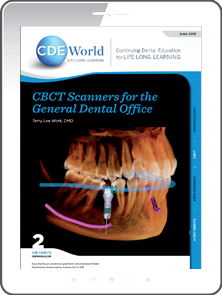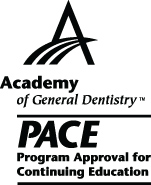CDEWorld > eBooks > CBCT Scanners for the General Dental Office


ADA CERP is a service of the American Dental Association to assist dental professionals in identifying quality providers of continuing dental education. ADA CERP does not approve or endorse individual courses or instructors, nor does it imply acceptance of credit house by boards of dentistry. Concerns or complaints about a CE provider may be directed to the provider or to ADA CERP at www.ada.org/cerp/

Approved PACE Program Provider. FAGD/MAGD credit. Approval does not imply acceptance by a state or provincial board of dentistry, or AGD endorsement. 1/1/2023 to 12/31/2028. ID # 209722.
eBook
Released: Wednesday, June 3, 2015
Expires: Saturday, June 30, 2018
CBCT Scanners for the General Dental Office
By Terry Lee Work, DMD
Commercial Supporter: KaVo Dental
A significant result of advancements in dental radiography is the ability to identify disease and abnormalities—and more precisely plan and execute treatment—in more accurate and predictable ways. Among the radiography innovations increasingly incorporated into dental practice over the past decade are computed tomography (CT) and cone beam computed tomography (CBCT). However, of paramount importance to ensuring diagnostic acuity, use of the most appropriate technology, and minimal patient exposure to radiation is an understanding of the differences between CT and CBCT scanners, as well as their indications for use. This article provides a brief and general overview of CT and CBCT radiography, the capabilities and limitations of each, and illustrations of CBCT applications in general and specialized dental practice.
LEARNING OBJECTIVES:
-
Describe the differences between radiographs, CT scans, and CBCT scans.
-
Discuss the use of CBCT technology in the general and specialty practice.
-
Explain the capabilities and limitations of CT and CBCT scanners.
-
Identify considerations for choosing between the use of CT or CBCT scanners for acquiring diagnostic images.
About the Author
Dr. Work is a graduate of the dental school at Oregon Health Sciences University. He served 4 years as a Dental Officer in the US Navy before opening a private practice in Scottsdale, Arizona. Dr. Work is a member of the American Dental Association, the Arizona State Dental Association, and a diplomate of the International Congress of Oral Implantology. He serves as a mentor for the Engle Institute and lectures nationally on implant placement and bone grafting techniques.
Download FREE eBook now!

